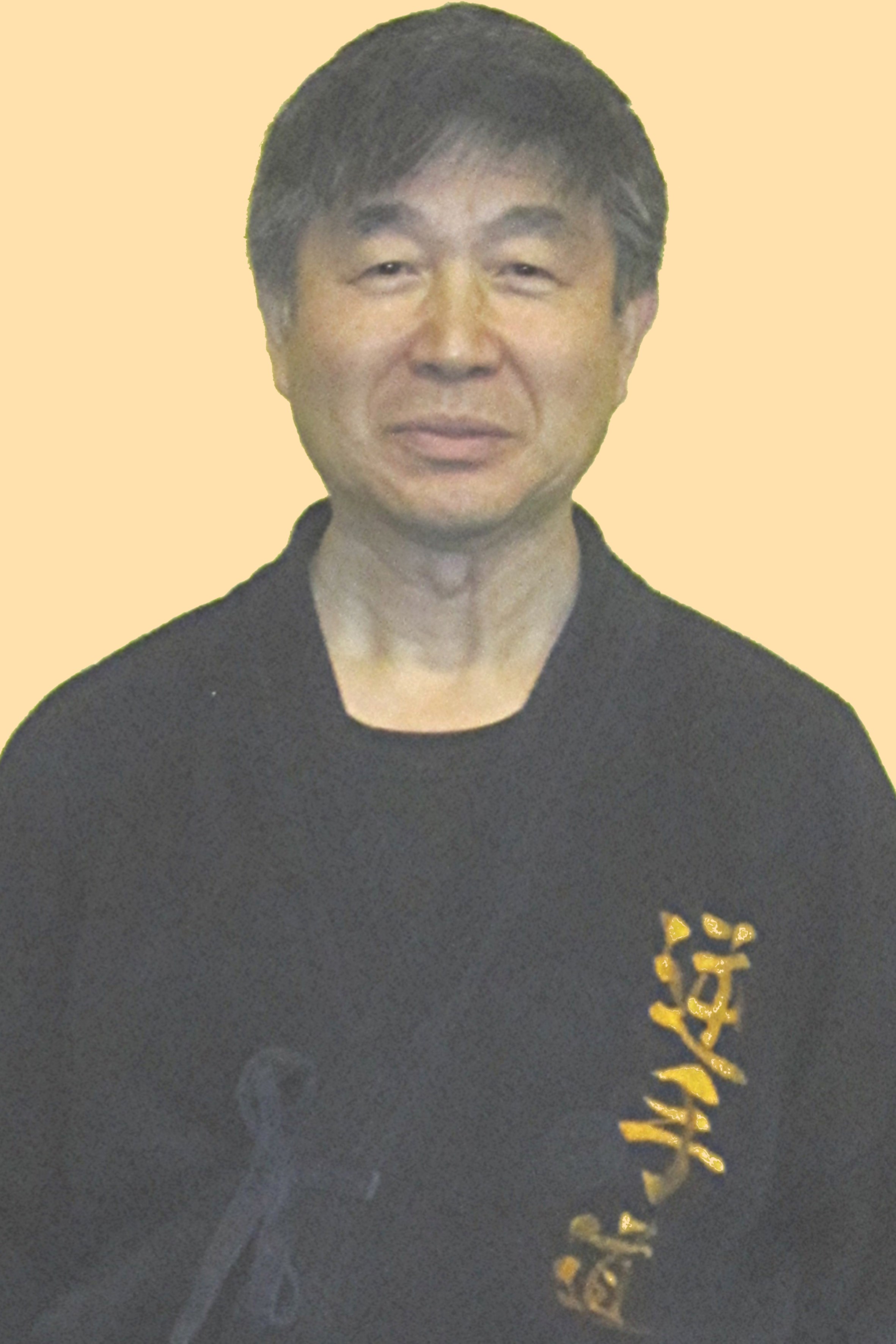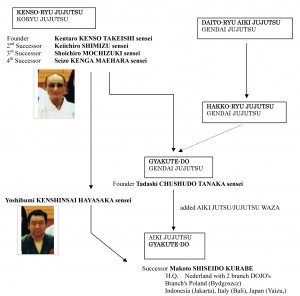Stichting KR (Gyakute-do Aikijutsu)
Technische Commissie
Soushi Makoto Kurabe
Steve van Nieuwenhuizen (8e dan Gyakute-do)
Theo Philips (6e dan Gyakute-do)
Contact
Head Quarter of European Gyakute-do
website: www.gyakutedo.com
e-mail: info@gyakutedo.com
Scholen
Branches The Netherlands
1. Den Haag Dojo
Instituut ‘De Sportacademie’, https://dojosportacademie.wordpress.com
Trainer: Steve van Nieuwenhuizen
2. Utrecht Dojo
Yushinkan Dojo, www.yushinkan.com
Trainer: Theo Philips
Branches Belgium
http://www.gyakutedo.com/index.php/branches-belgium
Branches Poland
http://www.gyakutedo.com/index.php/branches-poland
Branches Indonesia
http://www.gyakutedo.com/index.php/branches-indonesia
Branches Japan
http://www.gyakutedo.com/index.php/branches-japan
Genealogy of AIKI JUJUTSU GYAKUTE-DO
GYAKUTE-DO was founded by Tadashi CHUSHUDO TANAKA-sensei who learned KENSO-RYU JUJUTSU from Seizou KENGA MAEHARA-sensei, its 4th SOUKE. TANAKA-sensei received the SHIHAN degree in KENSO-RYU JUJUTSU. Then, also influenced by HAKKO-RYU JUJUTSU, he established a new style with a unique focus on GYAKUTE-JUTSU and named it GYAKUTE-DO. This was in the early 1970′s.
When TANAKA-sensei passed away in 1993, no successor was designated to continue leading GYAKUTE-DO. In Japan, the short life of this unique style drew to a close. After his passing away, Makoto Kurabe, who has moved to The Netherlands since 1989 and has been teaching this unique JUJUTSU system GYAKUTE-DO in The Netherlands, decided to take over this GYAKUTE-DO so that he could revive and transfer it to the next generation. During the past 24 years, Kurabe has developed the way to teach this system and adding his own developed AIKI-JUTSU, he renamed it as AIKI-JUJUTSU GYAKUTE-DO. In the meantime, he was also acknowledged as a member of KENSO-RYU JUJUTSU, which is the origin of GYAKUTE-DO to become a student of KENSHINSAI HAYASAKA-sensei. In 2013, Kurabe formally has become a successor of Tadashi CHUSHUDO TANAKA-sensei in 2013.
Characteristics of GYAKUTE-DO
A. JU-HO (soft technique)
1. NUKI(release)
2. RENKO(arrest)
3. NAGE(throw)
4. FUDO(control)
5. AIKI JUTSU
GO-HO (hard technique)
DAKEN-HO(hit and kick)



